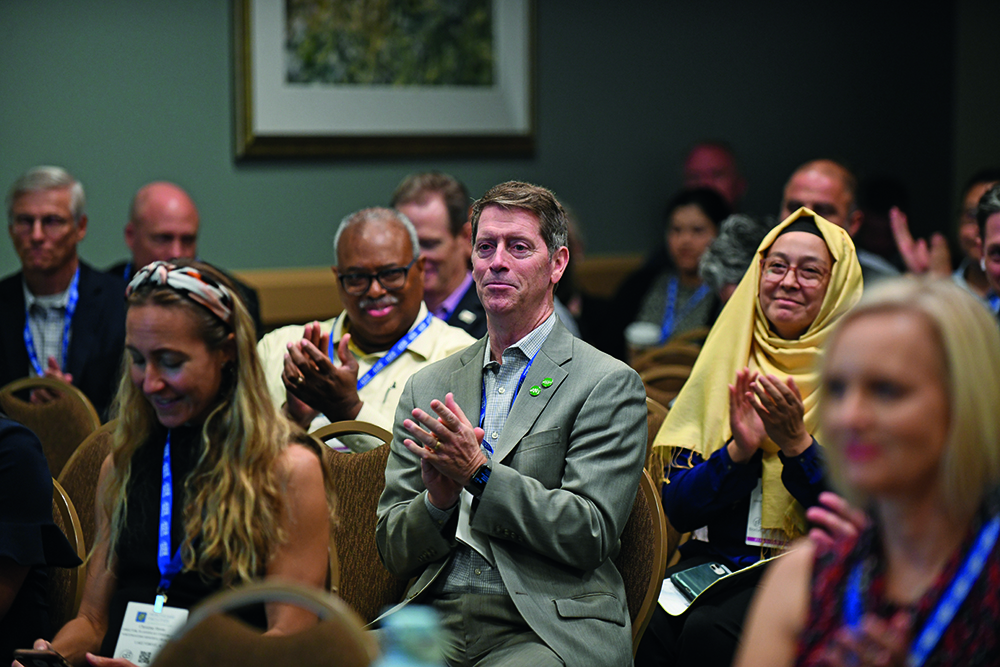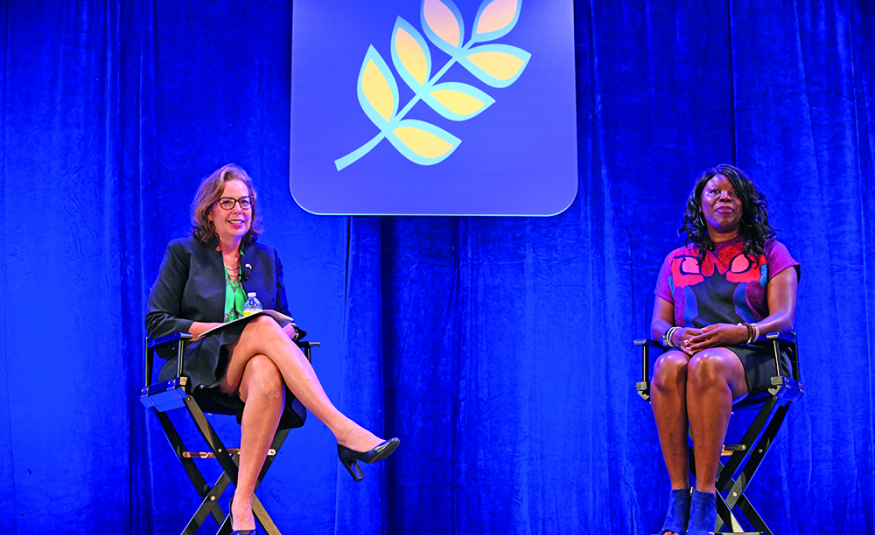EW caught up with Jenabeth Ferguson, vice-president, and symposium director of HFSE to find out more about event organising and marketing in a tumultuous time for trade shows
After two decades of travelling the United States, the Healthcare Facilities Symposium and Expo (HFSE), organised by JD Events, finally returned to its home state of California in October. Not only did the 35th edition of the show head back to its place of conception, but it also managed to improve its attendance only two years after the pandemic.
Exhibition World: Following the pandemic, how have your attendees’ expectations of the show changed?
Jenabeth Ferguson: We’re already finding a couple of things about our attendance. The first thing is that a lot of our attendees are from hospitals and, while not necessarily under travel restrictions, hospitals are certainly under budget restrictions. For them, getting away from work is harder to pitch as they’re overtaxed operationally.
The rest of the healthcare industry is very busy, which is a good thing but makes attending events a little bit harder.
There’s certainly been a change in expectations for our exhibitors. For JD Events, we’ve always believed in quality over quantity for our events; we pride ourselves in that. More so now, exhibitors are more accepting of that. For them, having spent two years trying to sell over Zoom, they’re just happy to see other people regardless of if they aren’t in the hundreds and thousands.
It’s also the same thing for attendees – everyone is happy to be out. Before, people just attended for the sake of attending. But now, everyone’s a lot more serious and intentional about why they’re there.
EW: What benefits does hosting in-person have over virtual?
JF: We never went virtual for any of our JD Events properties. We pivoted to some social media, but never went fully virtual. Specifically for the symposium, virtual just wouldn’t work. It works if you want to listen to a speaker and hear their content, but it simply does not work for networking and exhibiting – and exhibitors are the backbone of our shows.
For exhibitors, virtual doesn’t allow them to showcase their products, especially in the healthcare industry which is so sociable. You need to be able to see people, at a cocktail reception, for example, to make new connections and learn more things. Virtually, existing relationships can be maintained but it’s hard to develop new ones.
EW: What has gone into your marketing strategy for this year’s event?
JF: This year was a continuation of a big change for the symposium; more so than any other JD Events event. We’ve relied heavily on direct mail for a long time; other events would have made the change sooner. For the symposium, the nature of our attendees is very sociable and design oriented, so, we were reluctant to get rid of direct mail or cut down on it.
Coming out of the pandemic people weren’t necessarily back in offices - that was a consideration for us we had to look at. In 2021, just like in 2019, we printed a four- or six-page brochure. But for this year, we printed only a postcard instead. That was a huge step for us.
On the flip side, we focused much more on digital advertising. Buying advertising on associations’ and publications’ websites, social media, doing boosted posts, and more. For other JD Events’ events, we had that experience. But, for the symposium, it was a learning curve.
People are always surprised that it takes a year to plan an event – you don’t just turn up, it’s hard and it’s never the same. I’m already excited for 2023 because of the lessons I’ve learned in digital marketing for this year’s event, and because of the impact it’s had on our attendees.

EW: What has the feedback been on the change in marketing strategy?
JF: It’s been interesting. Our salesperson is hearing from people who had never heard of our event before. Even though we’d focused on attendee marketing, brand-new leads for an already established event were responding to the ads.
Our attendees were responding positively to seeing the ads wherever they went online. For them, interest in the event extended beyond ‘it fell on my desk’. Additionally, we were legitimised by the fact our event has been around for over 20 years, and so many people have already heard about it.
EW: What was the process behind deciding on your content?
JF: For this event, we have an advisory board of about 30 volunteers. They represent a mix of our audience: large architectural firms, hospitals, contract construction firms, and engineering firms. They’re very involved in helping me source information, which sets the course for all of our marketing – and content especially.
Going into this event, the process was a bit different to usual as 2021’s event was in December. This year we had a nine-month turnaround instead of 12. So we held a quick Zoom board meeting right after the 2021 event. To source content topics, in the meeting, I usually ask them: “What’s keeping you up at night?” regarding the industry and compile the feedback.
EW: What new lessons or processes came about this year?
JF: Firstly, this year the show is widening its scope to include topics just outside traditional healthcare. We have speakers returning to talk about global homelessness and other underserved communities such as indigenous and native communities.
Secondly, a lot of people in our industry are facing the retirement of the boomers, and a lack of upcoming younger talent. We are focusing on emerging leaders; each advisory board is given one free registration to invite an emerging leader that they know. A lot of them have embraced it – it’s one of our 2023 goals.





